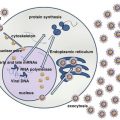© Springer International Publishing Switzerland 2015
Jean-Pierre Droz, Bernard Carme, Pierre Couppié, Mathieu Nacher and Catherine Thiéblemont (eds.)Tropical Hemato-Oncology10.1007/978-3-319-18257-5_1Oncology in the Concept of Tropical Medicine: To Be or Not to Be?
(1)
Parasitology and Tropical Medicine, University of French West Indies and Guiana, 11 rue Nuyens, Bordeaux, 33100, France
1 A Definition of Tropical Medicine
The first thing to do to introduce the concept of tropical medicine is to define the term. The easier might be to say that it is the practice of medicine, all medicine, in tropical areas. It is then up to clarifying the concept of tropical area and surprisingly this is not obvious. It must first integrate the equatorial regions to cover the regions between the two tropics. But where are the north and south bounds and how to consider the so-called subtropical areas? For someone subtropical areas include temperate regions until the 40th degree of latitude and for others it would stop at the 30th parallel, knowing that the tropics are more precisely at 23°27′ latitude. Let geographers care to agree and define concerned territories and populations. But we must go beyond this boundary.
The concept of tropical medicine must remain intuitive and variable in geometry because it is necessary to combine purely geographical criteria with development criteria, however, provided that a high level of development, that is to say, higher incomes, will tend to leave this framework regardless of their geographical location. Tropical medicine primarily concerns low-/intermediate-income countries and/or developing and emerging countries. It is conventional to say that tropical pathology decreases with development. Singapore, although located in the equatorial zone, does not match these criteria.
There is no need to set a rigid framework especially as fields of medical practices with other names can find their place in tropical medicine. This is the case of travel medicine, development medicine/international health, humanitarian medicine, and disaster medicine that are considered specialties; they have their own teaching programs, learned societies, and specific conventions.
Trips with medical concerns, that is to say, not ubiquitous, are primarily those taking place in the South for people from the North or the reverse if we consider the Southern Hemisphere. Development medicine primarily concerns the countries that have not yet acquired a good level of health, primarily tropical countries. The impact of natural disasters and/or those caused by human activity is always more pronounced.
Hurricanes, other storms, and earthquakes have greater impact because buildings are frail constructions and not secured (low-cost construction and/or non-seismic) and the settlements are exposed to natural hazards (flooding, landslides, etc.). Here the physical geography reasserts itself. Haiti, the Philippines, and Pakistan are countries whose human toll and economic consequences of climate disasters were the heaviest in 2012 [1]. There are fears in the future of an increase of these phenomena related to climate changes, the growth of urban populations with a higher density, conflicts, terrorism, etc.
2 The Scope of Tropical Medicine
But regardless of the level of economic development, there are strong relationships between diseases, geographical areas by including the features of wildlife reservoir of infection which are sources of microorganisms and/or communicable disease vectors, and the human societies. Tropical medicine retains marked peculiarities. First of all is the importance of infectious diseases which is still dominant.
This is due to the persistence of old diseases that have specific or strong tropical polarity; they can be caused by parasites (malaria, leishmaniasis, schistosomiasis, amebiasis, trypanosomiasis (human African trypanosomiasis [HAT], Chagas disease)), bacterial infections (cerebrospinal meningitis, salmonellosis, shigellosis, etc.), or viral infections (severe measles, dengue, yellow fever, etc.).
Additionally to these diseases are new and/or reemerging infectious diseases which are more frequently found and have a greater impact in the tropics: SARS (severe acute respiratory syndrome), avian flu, retroviral infections (HIV/AIDS, HTLV), viral hemorrhagic fevers (Lassa, Marburg, Ebola, etc.), chikungunya, cholera, and tuberculosis. Their importance (incidence, severity) is also a function of environmental conditions, not only climate but also social and economic settings.
Stay updated, free articles. Join our Telegram channel

Full access? Get Clinical Tree





